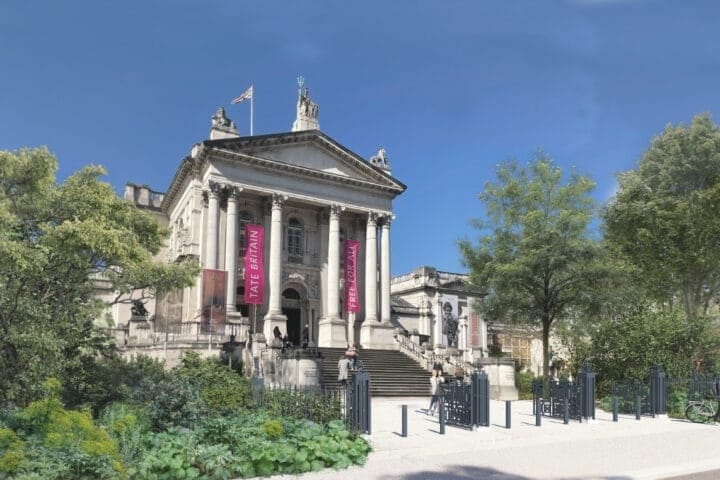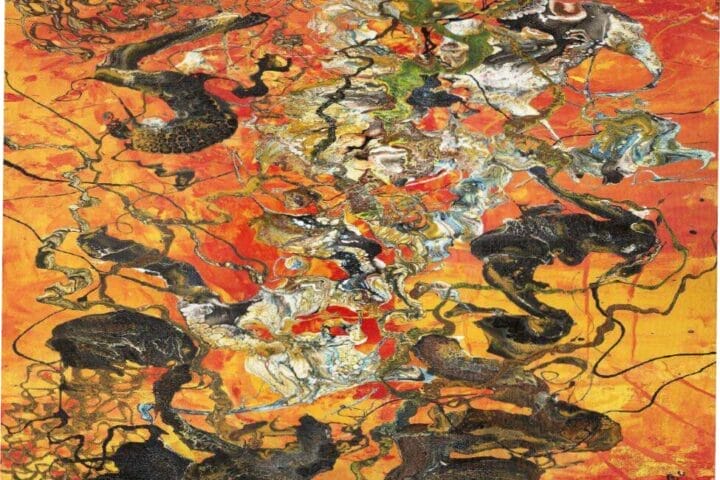On the occasion of the artist’s 177th birthday on Friday 19th April, the National Gallery has acquired La Psyché (The Full-length Mirror), about 1869‒70, by Eva Gonzalès (1849‒1883) thanks to three generous legacy gifts from Mrs Martha Doris Bailey, Miss Gillian Cleaver, and Ms Sheila Mary Holmes, and the National Gallery Trust. This is the first acquisition by the Gallery of a work by Gonzalès and the second acquisition of its Bicentenary year. La Psyché has not been seen in public for over seventy years and joins only one other painting by her in a UK public collection, The Donkey Ride, about 1880‒2, at the Bristol Museum and Art Gallery.
Gonzalès is the 20th female artist represented in the National Gallery Collection, marking a significant addition. The story of Gonzalès’s reputation, during and after her life, reflects some of the reasons why women artists are not well represented in the National Gallery. These include being offered fewer opportunities in life and the lack of interest shown, consciously or not, in works by women artists by collectors of the era and onwards, from whose acquisitions the National Gallery’s own collection was assembled.
During her lifetime Gonzalès was an established artist who exhibited multiple times to acclaim at the official Paris Salon. She was the only official pupil of Edouard Manet (1832‒83), with whom she studied from 1869. Gonzalès likely painted La Psyché around the same time that Manet was painting his portrait of her, Eva Gonzalès (1870). That work, in the Gallery collection, was the focal point of the recent exhibition, Discover Manet & Eva Gonzalès. Manet presented her in the unlikely painting outfit of a white gown, touching up an already framed floral still life, as much an allegory of Painting as a practising artist. The acquisition of La Psyché will continue the work started in that exhibition, providing a counterbalance to Manet’s presentation of Gonzalès as somewhere between a serious painter and society beauty, by showing her skills as a talented and lauded painter in her own right.
Interest in Eva Gonzalès has been growing in recent years. In 1990 a catalogue raisonné was published and her works have been included in exhibitions on women Impressionists in Frankfurt and San Francisco in 2008, in addition to the National Gallery’s own Discover Manet & Eva Gonzalès.
La Psyché depicts a simple room containing a sofa, a picture on the wall and a full-length mirror, called une psyché in French. A young woman looks at herself in the mirror, grasping a small red flower – the sole spot of bright colour in this subdued painting. Her dress is starkly rendered and her face is delicately modelled in shades of grey brown matching the print on the wall. This subtle monochrome is reminiscent of Manet’s early work but appears to be unique in Gonzalès’s own. The model is Gonzalès’s younger sister Jeanne, who regularly posed for Gonzalès. The restricted domestic scene and reliance on family members as subjects demonstrate the difficulties facing female painters at the time in comparison with their male colleagues.
Christopher Riopelle, The Neil Westreich Curator of Post 1800 Paintings at the National Gallery, says: ‘Remarkably, this important rediscovery by an artist who captures increasing international attention has been in a private British collection, unseen in public for more than 70 years. We are excited that it has come to the National Gallery. The world of Impressionist studies, and of women artists studies is, if anything, even more excited.’
Gabriele Finaldi, Director of the National Gallery, says: ‘Joining Manet’s portrait of Eva Gonzalès, this work by the artist herself helps to enrich the story the Gallery tells about 19th-century French painting. Eva died young and her works are rare. We are grateful to the legacy givers who have enabled us to buy it.’









